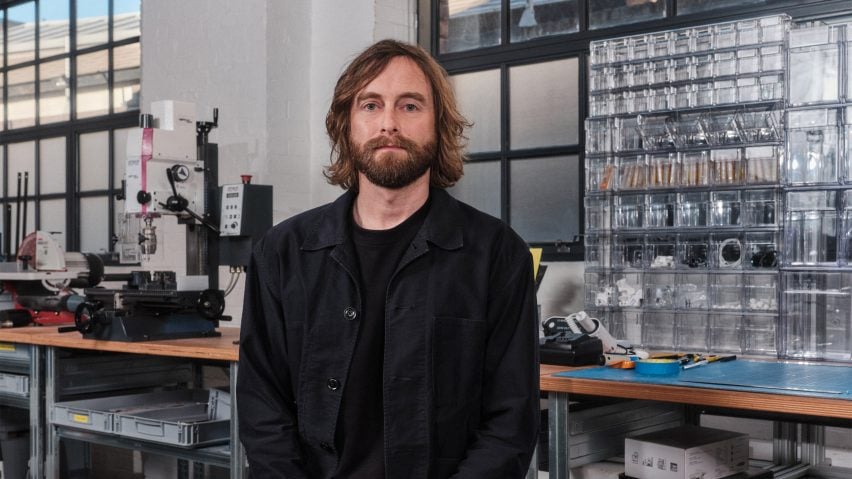
Tech designers "forgot new ideas" after iPhone says Nothing's Adam Bates
London-based start-up Nothing is trying to upend the consumer-tech industry. In this interview, the company's design director, Adam Bates, discusses how.
Since being founded by Chinese-Swedish entrepreneur Carl Pei three years ago, Nothing has moved at breakneck speed, releasing three wireless earbuds and two smartphones – with a third set to launch next month.
Counting iPod designer Tony Fadell and Reddit CEO Steve Huffman among an illustrious list of investors, the company's stated aim is to "make tech fun again".
"We're a bit bored"
Having joined Nothing as design director in early 2022 after spending 14 years at Dyson, Bates is tasked with ensuring that the brand's products deliver on that ambition.
"I think it's in a lot of our bones that there are some things that aren't right about these products," said Bates, referring to the current offering of smartphones from mainstream brands.
"And also that we're a bit bored," he added.
Bates suggests that the current state of monotony within the smartphone industry can be traced back to 2007 and the seismic launch of the original Apple iPhone.
"The iPhone in 2007 was a new format," he told Dezeen. "There were touchscreen phones before but the way they designed the interface – really we're still with that now."
"When something like that happens and then it catches and it gets traction, other people start doing it as well."
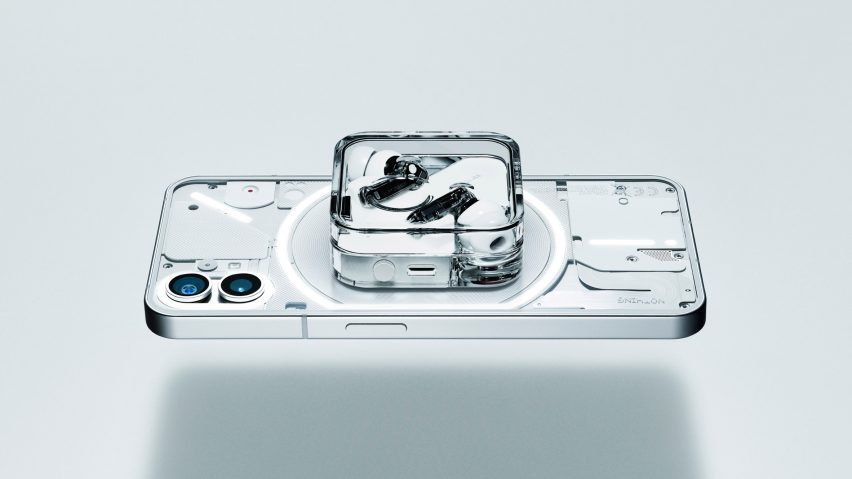
Prior to 2007, the mobile-phone industry had seen extensive innovation to varying degrees of success, as manufacturers released products that flipped, slid or twisted open, were ultra-thin or reimagined the keypad.
But the advent of the iPhone sparked a fierce game of catch-up within the industry that led to design experimentation becoming a casualty, Bates contends.
"It was a bit lost and uninspired and then came the iPhone, which was this massive step-change, and everyone focused on Apple and that format, and in the process of doing that a whole industry was built that was quite rigid," he said.
"Maybe in that process of trying to get there, people forgot about thinking of new ideas, and then also customers maybe stopped wanting new ideas."
Seventeen years and 36 iPhone iterations later, Nothing argues that the magic has worn off and that it's time for new ideas to make a comeback.
"There's a bit of trusting our gut instinct"
Designed with extensive input from Nothing founding partner Teenage Engineering, a Swedish tech studio, the brand's Phone (1), launched in 2022, sought to break away from the sleek slab aesthetic of most smartphones.
Picking up on the design language of Nothing's first product, the Ear (1) earbuds, it featured a transparent back displaying its inner components and a light-up "glyph interface".
Hundreds of distinctively arranged LEDs illuminate to create patterns that indicate notifications from apps, incoming calls or charging status when the phone is face-down.
The phone was included in Time Magazine's Best Inventions of 2022 list.
Released a year later, the second-generation Phone (2) focused on refinements such as a more ergonomic pillowed-glass back and extra glyph functions, as well as updates to Nothing's designed-in-house, monochromatic operating system.
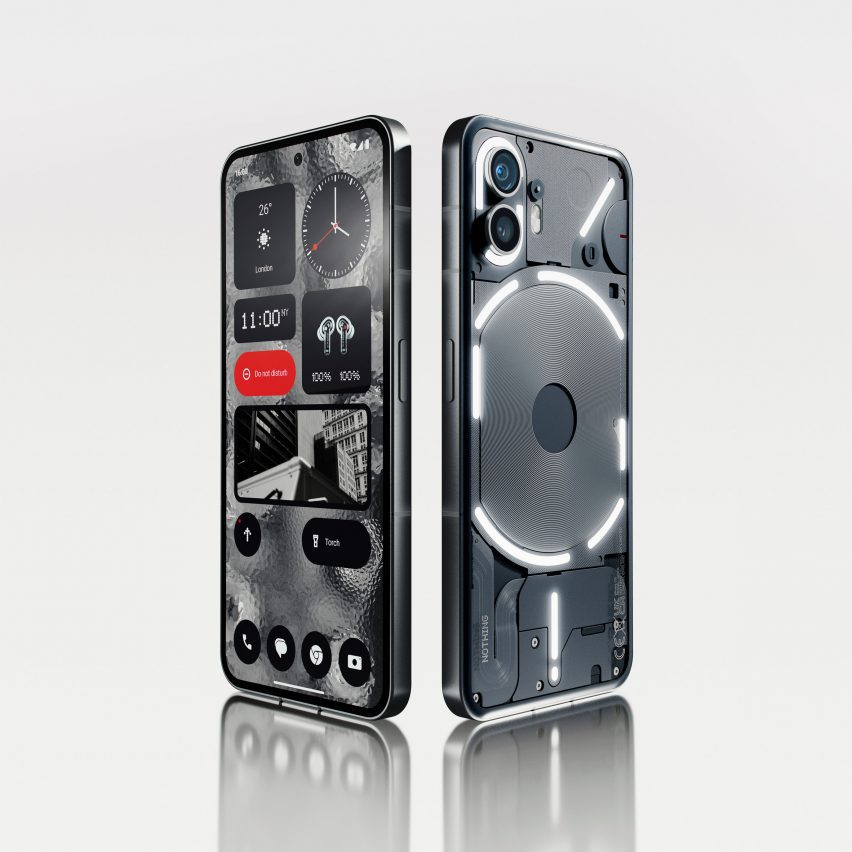
Only another eight months on and the brand will soon launch the Phone (2a), touted as a low-cost alternative to the Phone (2).
Ear (1)'s successor, the Ear (2) and Ear (stick) – which is defined by a cylindrical twist-to-open case – complete the Nothing range of products, not including those produced by its sub-brand, CMF.
Bates explains how Nothing is attempting to ensure its designs stand out from the crowd.
"I guess for us to try and break out of it, we've got to trust ourselves as people that are interested in technology, that are creative, that care about the products that we use," he said.
"There's a bit of trusting our gut instinct of what excites us and what excited us in the past, because data is not going to lead us there – data is going to lead us to the same place as everyone else."
"Design hasn't got better"
Nothing's design aesthetic has a retro-futuristic element to it, referencing multiple tech designs from previous decades that broke the mould at the time – particularly Apple's transparent products in the late 1990s and early 2000s.
"There is a conscious element to that," Bates acknowledged. "When Apple was on such a roll surprising you every time, I guess there might be a nostalgia for that feeling, and maybe the visual language comes from that feeling."
The company's studio in King's Cross, London, is filled with all manner of old-school tech, from Gameboy Colors to Casio piano keyboards.
"Design hasn't got better now, it's always been really good," said Bates.
"So there's definitely a natural thing, which is to look at something from the 1970s with the same seriousness as something on some Instagram feed of new renders that people are putting out."
Bates confesses to being fascinated by companies that manage to sustain prolonged periods of design innovation.
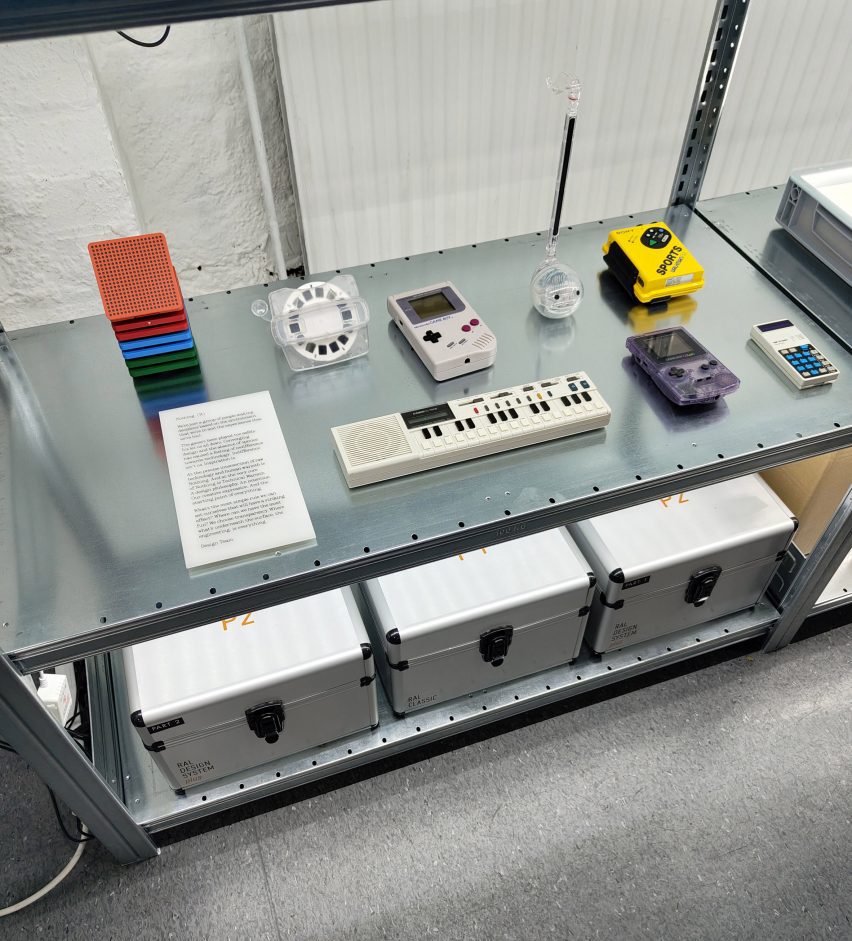
"There's these golden eras in companies and they've got quite a lot in common with each other when you look at them," he said.
"Some people just manage to keep doing it – Nintendo just keep doing it, they have a flop and then they come back again, so they've got some magic which passes on through generations."
One such company is Dyson, where Bates was formerly head of design and product experience working on products including the feted Supersonic hairdryer.
"It did become more corporate as time went on, but it always operated quite a lot like a start-up," he recalled.
"A thing to bring with you from there is: challenge everything, don't take anything for granted, don't trust anything unless you've seen it with your own eyes and you've tested it yourself."
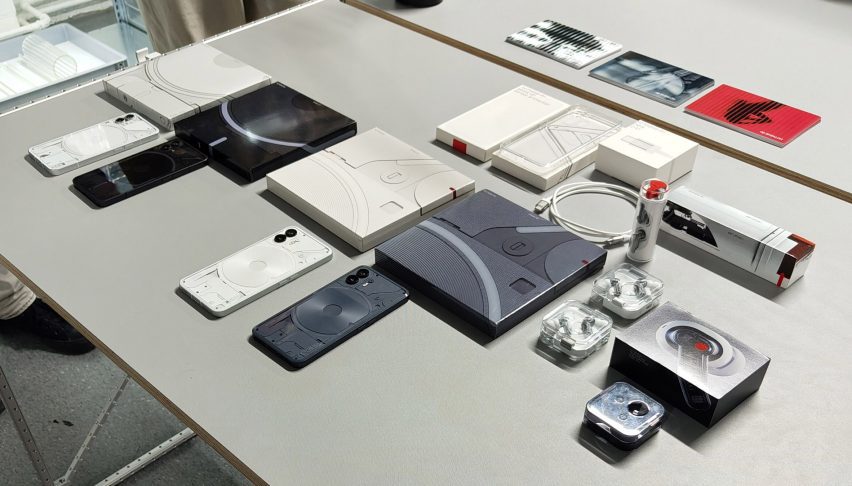
But while he says Dyson was "an amazing education", he argues there is a limit to what he can import to the design team at Nothing.
"Dyson was good at innovation and good at new ideas, so I can bring my experience there and see how that works here," he said.
"But at the same time, could they do a phone with exactly their approach? There are things that you just can't mess with, and Dyson just mess with everything."
One important point of difference between Dyson and Nothing is the pace of development. Including research, the Supersonic took five years in all, the Phone (1) just 10 months.
Now with six products in existence including two generations of its main lines, Bates says Nothing has no intention of slowing down.
"I think the general trend is going to speed up," he said.
That touches on a common current criticism of the tech industry: that unnecessarily tight release cycles have stifled innovation and experimentation.
So how will Nothing ensure that its products stay "fun" when moving at such a speed?
Bates is hopeful that the company's strong cultural focus on design will ensure that it continues to test boundaries.
"We're not just here to make money – loads of companies make money," he said. "Some of the designers I've been able to hire are some of the best in the business and could probably work anywhere."
"They've chosen to work here because they want to do something different, so we have to hold each other to account I guess."
"If you're not in the game you can't do anything"
Just how far the Nothing will push the envelope is an open question – its phones stick with the scrollable, rectangular LED screen zeitgeist that has dominated since the iPhone, and the brand has not yet indicated plans to move away from this format.
Another major challenge for the smartphone industry is sustainability. According to Deloitte, the devices generate 146 million tons of CO2 each year worldwide, mostly linked to the extraction of the many precious minerals they contain.
Nothing has taken some steps to reduce the environmental impact of its products. For instance, Phone (2) uses recycled aluminium, plastic, tin, copper and steel, renewable energy in its assembly plant and plastic-free packaging.
Its packaging displays the lifecycle carbon of products, with Phone (2) carrying a footprint of 53.45 kilograms CO2 or equivalent emissions – eight per cent less than the Phone (1).
In comparison, ethical smartphone company Fairphone's fourth-generation phone's lifecycle carbon emissions were 43 kilograms, while the least-polluting version of the iPhone 15 generates 66 kilograms.
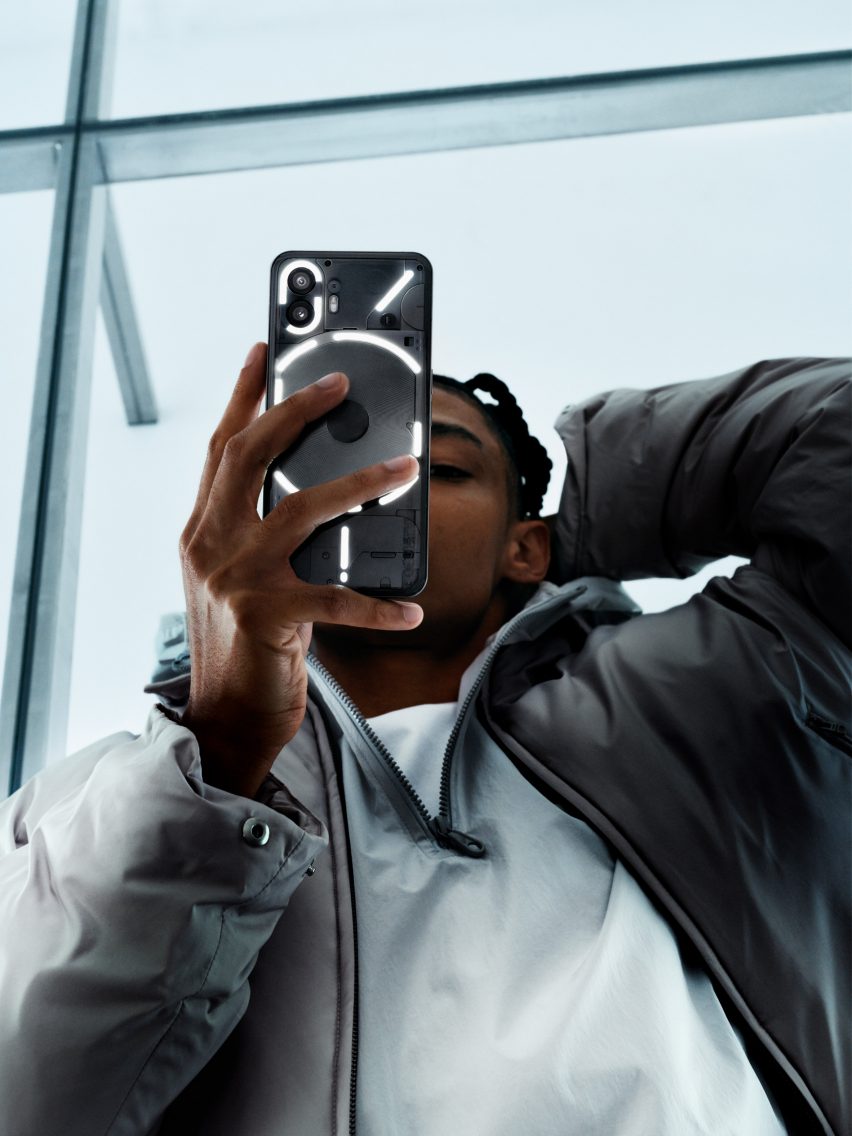
"The repairability thing is clearly the way to go," said Bates, referring to a push from campaigners and some regulators for tech brands to prolong their products' lifespans.
"Maybe there are Nothing products in the future where you can touch the battery, and you can take the battery out, and we're back to those days where you take the rear cover off."
However, he indicated that these sorts of changes could be some way off yet as the brand continues to find its feet.
"If you're not in the game you can't do anything. If you do too much too soon, or if you kind of pin yourself to something, we will not survive, and then we're all just at the mercy of Apple, Samsung, Oppo, Google."
The photography is courtesy of Nothing unless otherwise stated.
Dezeen In Depth
If you enjoy reading Dezeen's interviews, opinions and features, subscribe to Dezeen In Depth. Sent on the last Friday of each month, this newsletter provides a single place to read about the design and architecture stories behind the headlines.